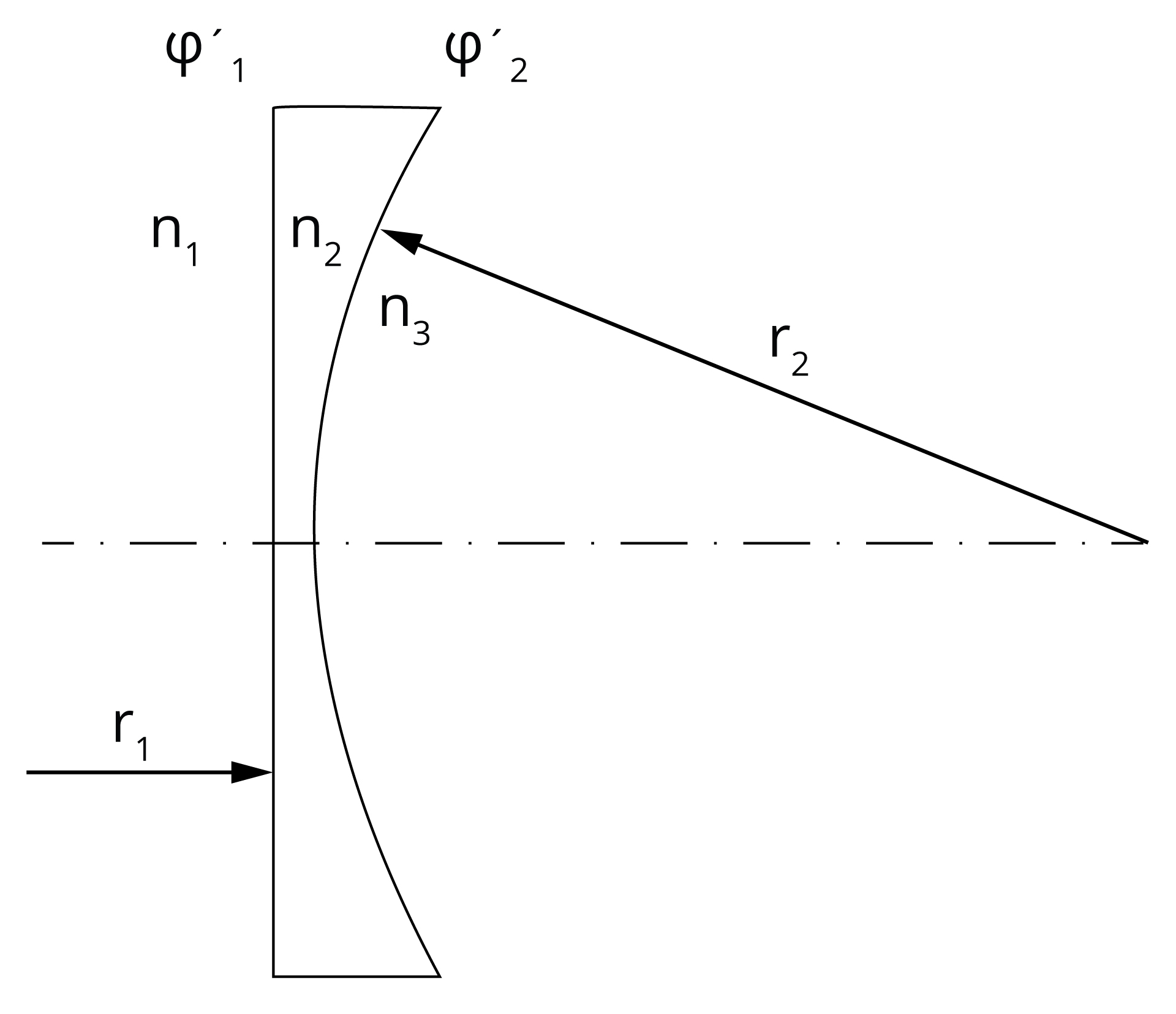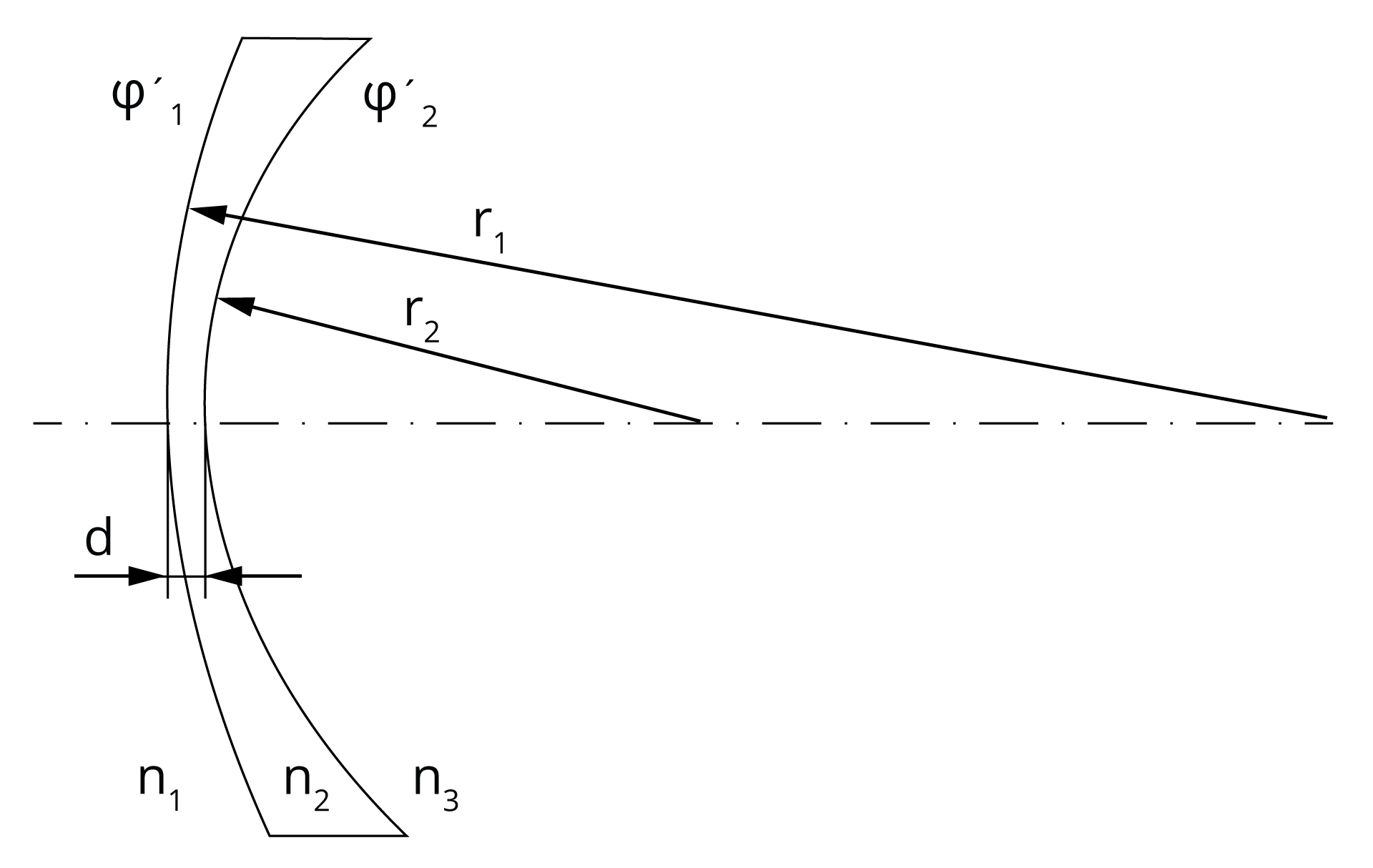Imaging with minus spectacle lens
Introduction
Minus spectacle lenses can be biconcave, plan-concave, periscope, meniscus and point-focal imaging. In biconcave lenses the total optical power is formed with count of front and rear surface (both are minus). Currently these lenses where replaced by new types because of bad image quality (oblique rays astigmatism, visual field distortion). Plano-concave lens has one surface plan. Total optical power is formed by rear surface.

In minus periscope lenses is used front surface with power +1.25 D. So, the value of the back side should be -1.5 D and smaller. These lenses better deal with oblique ray’s astigmatism and enables free movement of eyelids with eye-brushes behind the glasses.

Concept of periscope lens enables to develop meniscus lens – semi-shell and shell. Further development goes to so called point-focal lenses.
Goals
- Schematically draw biconcave spectacle lens and its imaging rays
- Calculate optical power of the minus meniscus semi-shell lens according the Gullstrand formula. Back side optical power is -10 D, thickness is 1.5 mm and refractive index is 1.5. Draw this lens schematically.
Equipment
Drawing equipment, ruler.
Methods
Schematically draw biconcave spectacle lens and its imaging rays
Draw schematic picture with biconcave spectacle lens. Object is placed in objective plane in distance which is twice bigger than is focus distance. On the picture draw all important points – focus points, main points etc. How will look the final image?
Calculate optical power of the minus meniscus semi-shell lens according the Gullstrand formula. Back side optical power is -10 D, thickness is 1.5 mm and refractive index is 1.5. Draw this lens schematically.

Results
Draw biconcave spectacle lens and its rays transfer schematically.
Calculate optical power of the minus meniscus semi-shell lens according the Gullstrand formula. Back side optical power is -10 D, thickness is 1.5 mm and refractive index is 1.5. Draw this lens schematically.
𝛗´c =
Drawn figure:
Discussion
Minus lenses are thicker in periphery in contrary to plus lenses. With minus lenses we correct myopia. Minus lens shifts rays from space in front of retina right to the retina. If we correct myopia we use weakest lens to avoid of accommodation.
Conclusion, notes, comments
How looks the image formed by minus spectacle lens if the object is placed in distance which is bigger than focus distance? Draw the schematic picture.